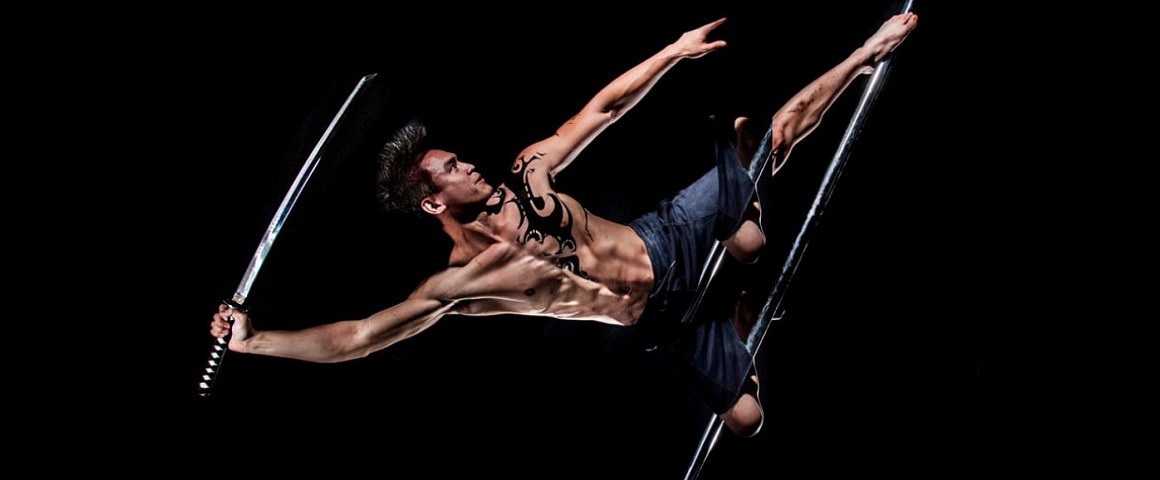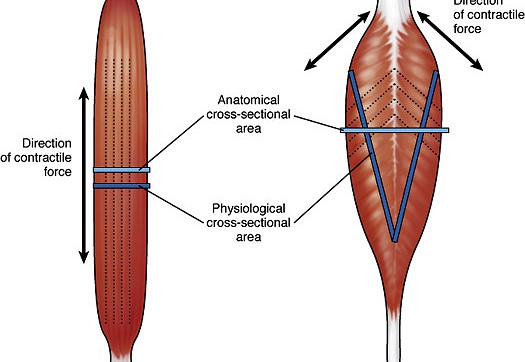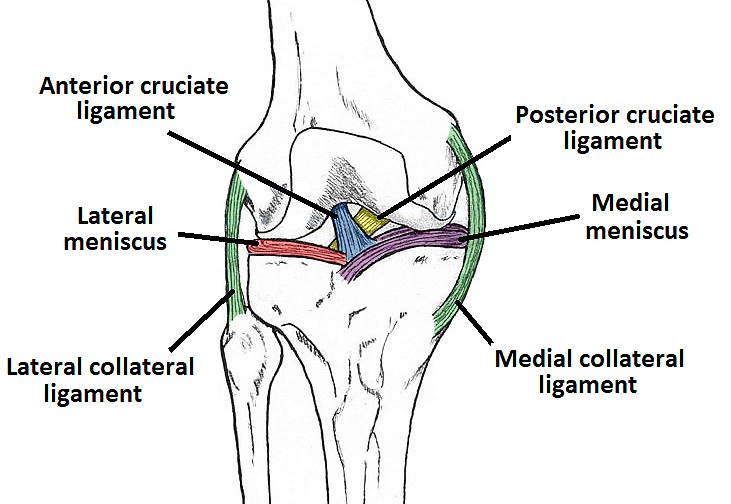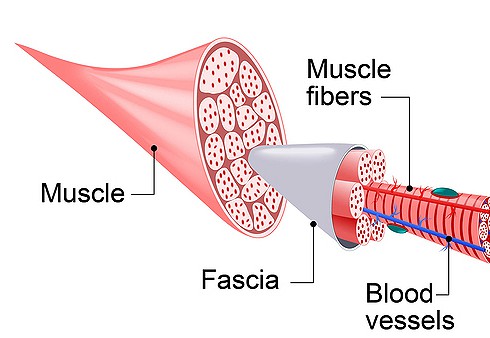
Kenneth Kao
Oct 1 - 9 min read


Know your body
In pole, training flexibility to improve lines and obtain certain moves frequently begins without a full understanding of what is being stretched. So, how do we choose what tissues to stretch, and what are the cost and benefits?
There are three general types of tissues that pole artists stretch:
• Muscle/tendon
• Ligament
• Fascia/skin

A muscle crosses one or more joints. When stretching a muscle, which is attached to a tendon by default, it is ideal to stretch in the same line as the function of the muscle you’re stretching.
What does that mean?
Since your quad extends the knee, then you should stretch by flexing the knee. Your psoas externally rotates and flexes the hip, so you should stretch it in extension and internal rotation.
It seems obvious, but this is where proper technique and understanding of good biomechanics matter IF you are targeting a particular action. Remember, function follows form (https://corewalking.com/muscle-shapes-function-follows-form/). If you stretch (let’s say the rectus femoris—one of the quads), but with rotation at the knee, you aren’t stretching it effectively and you may, with repetition, be forming patterns that may lead to long-term damage.
That being said, muscle is the fastest recovering and adapting of any of the issues we’re discussing, so don’t worry too much about being exact unless you are going to be repeating the stretch over and over. It’s only when a muscle is repeatedly damaged and never given a chance to heal that it leads to real problems.
Stretching muscle should feel nice. It shouldn’t feel like tearing or sharp pain, and it should feel like your range of motion is improving quickly with consistent training. Pain should not increase the time you stretch, and in the long term, and you should feel relaxed after you are done rather than tenser. If you feel tenser, you may be stretching incorrectly (not in the correct angle, stretching the wrong tissue that's also tight like fascia or even nerves), or you’re stretching an already damaged muscle (a pulled hamstring, for instance).
If this is the case, stop stretching that way.
In general, I am a proponent of active flexibility, and very rarely, passive flexibility (https://www.ncbi.nlm.nih.gov/pubmed/20051728). I know there’s a lot of debatable information out there, so I’ll simply state my opinion.
I do believe that ballistic stretching is extremely effective and useful if properly and cautiously employed (https://www.ncbi.nlm.nih.gov/pubmed/17194248). PNF stretching is also to be carefully handled as, while it is extremely effective, it does take full advantage of the natural neurological reflexes that can leave your muscles completely in a state of low protection for a certain duration. If you do not know what these are, I recommend reading up on what they are before you begin your stretching journey: https://www.ncbi.nlm.nih.gov/pmc/articles/PMC3273886/
As you will see, there’s a lot of contrary studies and even in the above articles, I don’t always agree with the conclusions the researchers are finding even in the above article. This is in large part due to the lack of skills and familiarity the researchers themselves may have to flexibility and methodologies. For instance, I frequently see a "hamstring stretch" in the image with the study, and yet the biomechanics aren’t correct to stretch the hamstring effectively—but conclusions are drawn, anyway, when the variance on stretching technique is extremely high between subjects.
Anyway, I digress.

Ligaments connect joints. They have little blood supply, so damaging them results in very slow healing. Stretching a ligament should only be done very cautiously, with the guidance of a professional, and in most cases, it is not recommended.
I can’t tell you how often I’ve seen people stretch with the belief that they are improving their range of motion in a healthy way—when in fact they are stretching their ligaments and, as a result, they are destabilizing their joints.
Essentially, stretching a ligament is like giving yourself a minor sprain.
The ligament is "backup" to the muscles guarding and protecting of a joint. If a muscle fails, the ligament takes up the slack. So, if you stretch your ligaments, especially in areas like the spine and shoulders, you are putting yourself at risk for more damage due to less trauma. This means that instead of a minor injury stubbing a toe, let’s say, you could dislocate the toe because the ligament is loose.
This is also why "popping" or "adjusting yourself" is a bad idea. To pop a joint, you have to shift the joint outside its normal range of motion—which means that you are stressing the ligaments by default.
So how do you stretch a ligament? It's not an easy answer, but it comes from either deactivating a muscle and stretching aggressively beyond it, or more frequently, stretching in directions that your joints are not meant to bend.
A common example of stretching a ligament for the sake of pole is for a hyperextended knee. The natural normal range of motion of the knee into extension is 5 degrees beyond neutral. However, extremely hyperextended knees are considered more "beautiful" in dance, and thus, many pole artists seek the better line. The benefit is that it does indeed create a nice wavelike line of your legs, but the consequence is that you are stretching at the ACL and PCL (and other ligaments) and you may wear away your knee cartilage faster.

Fascia/skin
Ah, the skin. Fascia is the tissue that surrounds the other tissues in your body. The skin, being the largest organ of the body, has a bunch of fasciae connected to it. Rolfers (https://en.wikipedia.org/wiki/Rolfing) specialize in dealing with the fascia. There are a lot of theories as to the effects of natural fascial tone on movement. For example, it may be that your right ankle is actually why your hamstring is very tight as well because it’s all bound up by the fascia at your ankle. Anything that has to do with a larger movement pattern can be thought of as stretching a fascial "train".
Scar tissue inside the fascia is frequently identified as the culprit to certain feelings of being "stuck". An example might be that you received a deep cut in the back of your hamstring, somehow. After it healed, there was a ball of scar tissue left behind that you continue to feel whenever you try to stretch or contract the hamstring. Your calf seems tight as well on that leg, and your low back.
As for how it affects pole?
Well, we do a lot of skin damage in pole, which is in pole, essentially synonymous with fascia. If we continue to stretch the fascia around certain contact points, it will change the resting tone of our tissues underneath it, even to the point of affecting our muscle’s ability to contract. Think leg hangs and armpit holds. I’m not even talking about the stretchiness of your skin at those contact points (you know what I’m talking about).
This is the natural "consequence" of the pole, and it’s the cost that we’ve chosen to take on. When you hurt fascia, it often feels like a sudden tearing sensation, and left behind is extreme sensitivity that takes a very long time to heal. This is my personal story around knee hangs. Believe it or not, I used to do knee hangs just like everyone else, but it took 3 years to recover from the fascial tear.
Fascia also surrounds veins, arteries, and nerves, so damaging fascia can also affect those structures as well.
How do you stretch fascia? Manual intervention such as rolfing, massage therapy, chiropractic work, and general full-body movement and stretching can effectively stretch (and treat) your fascia well. This usually takes a deeper understanding of the systems to perform effectively as each individual has injured and used their fascia differently. But, stretching your body in the full expression of a movement as in dance, while heating your body either through hot environments or a good warm-up can help your fascia's resting position. NOT staying in one place without moving for long periods is also an important part of caring for your fascia.
Conclusion
The goal of this blog is not to scare, but to bring more awareness to the activities we are frequently involved in. The very fact that you are alive and moving means that you will do damage to any of these structures. But don’t panic. Your body is very good at healing. It’s the repeated damage and the lack of information in the pole industry on this topic that has led me to write this.
It is my opinion that stretching muscle for the sake of performing movement better is almost always a great idea. Stretching ligaments is almost always a bad idea—but even I would stretch the ligaments of my ankle for a better toe point (and, destabilizing the top of the ankle is far less risky than the sides or bottom of the ankle so I consider the cost-benefit favorable). And as for skin and fascia? If there’s damage to the fascia, you should be treating it, but otherwise just stretching your fascia is something you want to minimize when possible simply because pole contact points are so focused on stretching very specific points along a fascial train. By reducing the frequency of certain favourite techniques in favour of more variety in your training, you can decrease long-term trauma.
Ultimately it is your own choice that you feel is "worth it" for your pole career. Just remember, taking a break does not mean that you are quitting or that you have to stop doing x thing forever. It just means that, maybe, you need to give your body a chance to catch up and adapt to the rapid stresses you’ve put on it when you jumped right into your new favourite thing.
Disclaimer
Be aware that Kenneth Kao isn't able to provide individual medical advice unless you are a patient because he is a licensed doctor, and that means that he has to comply with all the laws in every state and nation to keep his license.
Do not take anything in this blog as individual advice for you or your condition. There are no claims or promises in this blog post that should alter your training and care without direct consultation with your healthcare provider.
Originally posted on HTTPS://POLENINJATUTORIALS.COM/BLOG/198689/STRETCHING
If you enjoy this content, be sure to sign up to the Pole Ninja Tutorials Newsletter by visiting POLENINJATUTORIALS.COM